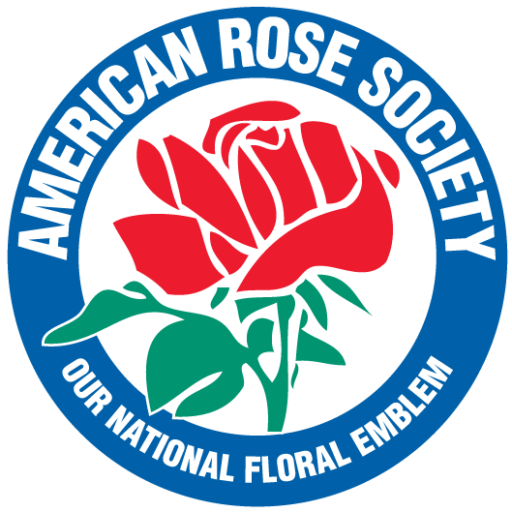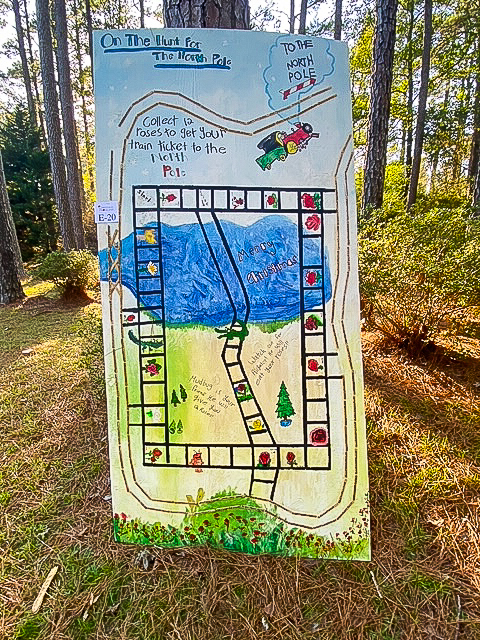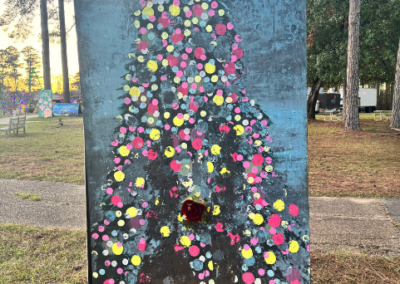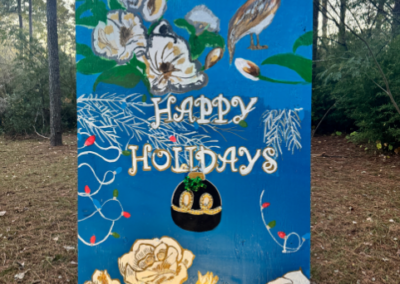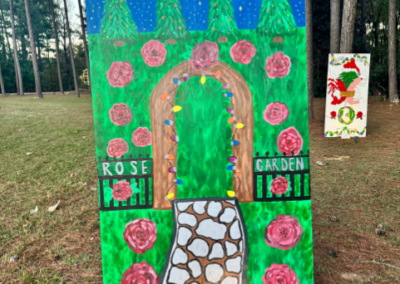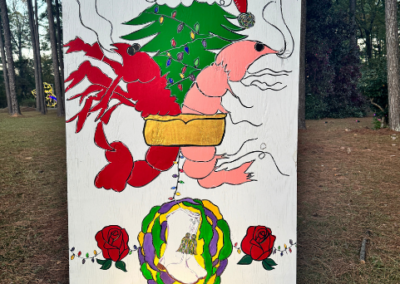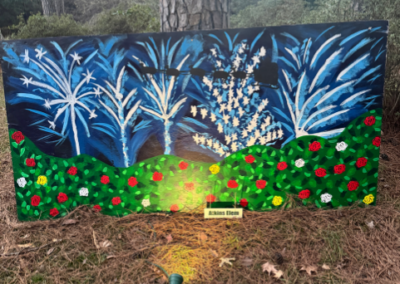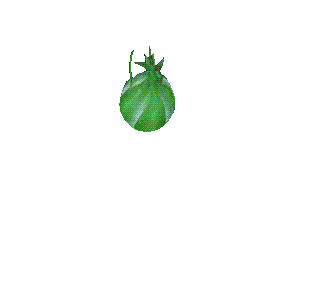from the 2018 American Rose Society Handbook for Selecting Roses
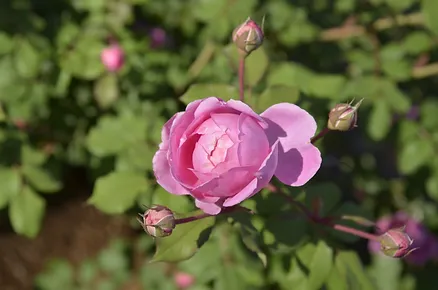
Classification of Roses
The American Rose Society recently approved a new classification scheme that reflects both the botanical and evolutionary progress of the rose. There are three main groupings: Species (i.e. wild roses); Old Garden Roses (classes in existence before 1867); and Modern Roses (classes not in existence before 1867).
Classification Characteristics — No other flower has a wider range of size, color, shape and flower form than the rose for attractive and easy adaptation to any garden setting. Roses are among the most versatile of plants. They come in every shape, size and color imaginable with architectural dimensions, both in bloom and plant size, that make it possible to please everyone! They bloom constantly from early spring to late fall, providing a rich tapestry of color in the garden.
Starting out on the rose selection pathway, the architectural shape and dimensions are of prime importance. To navigate this panorama of size and space, the following explanations have been compiled to explain the range of classifications available.
Species Roses — Often referred to as “wild roses,” species roses are usually single-petaled (4-8 petals), once-blooming and have a bush size ranging from two2 to 20 feet. They are listed according to their Latin name, beginning with R. for Rosa and can have common synonyms. For example, R. foetida bicolor is also known as ‘Austrian Copper’.
Old Garden Roses — In 1966, the American Rose Society defined old garden roses as those types that existed prior to 1867, the year of introduction of the very first hybrid tea, ‘La France’. Within this generic definition, a number of popular subdivisions exist based on natural historical developments and characteristics. The flower form can be quartered, cupped, imbricated or expanded, reflexed, globular or compact. After an initial spring crop of blooms, some varieties may produce no more flowers the rest of year, but their hip production does add a different kind of beauty to the garden. The beauty of the old garden roses often lies in the heavy fragrance they can impart to the garden. The most popular classes are:
Alba — Known as “white roses,” these plants are upright, often climbing, have dense blue-green foliage and are disease resistant.
Ayrshire — This group of climbing, sprawling roses originated in Scotland and are once blooming.
Bourbon — Developed from the hybrid chinas, these were the first repeat-flowering roses. They derive their name from the location of the first members of the class, the Ile de Bourbon in the Indian Ocean. Plant size can range from 2 to 15 feet tall. Repeat blooming.
Boursault — This is a small group of thornless rambling-type, once-blooming roses developed by the French gardener who gave his name to the class.
Centifolia —These Dutch hybridized roses derive their class name from the fact that the flowers often contain more than 100 petals. Plants are 4 to 8 feet tall, winter hardy and are once blooming. They are also referred to as “cabbage roses” and are featured in Dutch flower paintings of the 17th century.
China — This group’s most important characteristic is its ability to repeat bloom. The plants are variable in height, with relatively few thorns. They are generally winter-tender, not surviving well below USDA zone 7. The flowers tend to be borne in small clusters. China roses originated in Southeast Asia and are one of the most important historical groups of roses.
Damask — These roses are best known for their intense heavy fragrance. Plants generally range in size from 3 to 6 feet. Some varieties are repeat blooming.
Hybrid China — These plants are generally small, ranging from 2 to 3 feet tall, and are repeat blooming. Stems are often too weak to support the clusters of blooms, which have a spicy fragrance. Plants are not hardy and require winter protection in cold climates.
Hybrid Gallica — These plants are small, 3 to 4 feet tall, and are winter hardy. Blooms are fragrant, come in brilliant colors, and are once blooming.
Hybrid Perpetual — Popular during the 19th century, these roses are characterized by their repeat bloom, plant size (about six feet tall, upright), fragrance and color range (mostly pinks and reds).
Moss — Named for the mossy thorn growth on the peduncle just below the bloom and sepals, this group releases a pine-scented oleoresin when the moss is rubbed between the fingers. Plants are generally winter hardy and 3 to 6 feet tall. Some varieties are repeat blooming.
Noisette — This classification originated in the United States by Philippe Noisette of Charleston, SC, who later introduced them in France when he moved there in 1817. Plants are large and sprawling, often reaching up to 20 feet tall. Blooms are produced in fragrant clusters.
Portland — This small group of roses was derived from crosses involving hybrid gallica, damask, centifolia and hybrid china. They are small in stature, usually 4 feet tall, repeat blooming and have very short peduncles. This class was named in honor of the Duchess of Portland.
Tea — Characterized as variable in height, with some of the best cultivars being Climbing Teas. Teas have large blooms on weak stems, resulting in drooping, or nodding, flowers. This group is one of the immediate ancestors of the modern Hybrid Tea. Tea roses are relatively winter-tender. They grow best when only lightly pruned.
Modern Roses
The era of modern roses was established in 1867 with the introduction of the first hybrid tea, ‘La France’, by the French breeder Guillot. This variety was considered unique for a number of important horticultural reasons. First, it possessed the general habit of a hybrid perpetual as well as the elegant shaped buds and free-flowering character of a tea rose. By the late 20th century, more than 10,000 hybrid teas had been bred with great success. The introduction of ‘La France’ heralded the era of modern roses. Breeders were quick to recognize that planned parenthood could evolve new flower forms, size, growth habit and colors. Therefore, the following new classifications based on growth habit evolved.
Hybrid Tea & Grandiflora — Perhaps the most popular class of modern roses is the hybrid tea, easily recognized by the large shapely blooms containing 30 to 50 petals. Flowers are borne on long stems either singly or with several sidebuds. In 1945, the ‘Peace’ rose heralded the modern era of the elegantly formed hybrid teas. So dramatic was the overwhelming public acceptance and praise accorded this variety that its place in history was instantaneous. Since 1945, many thousands of new hybrid teas have been bred and introduced.
In 1954, the introduction of a rose bred from crossing the hybrid tea ‘Charlotte Armstrong’ with the floribunda ‘Floradora’ resulted in a carmine‑rose and dawn pink variety. It displayed not only the characteristics of a hybrid tea but also the ability to bear clusters or trusses and grow to a commanding height of 6 to 8 feet or more. To accommodate this variety, the class of grandiflora was born. ‘Queen Elizabeth’ had the distinction of being the very first member of this class.
Floribunda & Polyantha — Second only to the hybrid tea and grandiflora in popularity, the floribunda is characterized by its profuse ability to bear flowers in large clusters or trusses with more than one bloom in flower at any one time. This class is unrivaled for providing massive, colorful, long-lasting garden displays. The distinct advantage of the floribunda is its ability to bloom continually whereas the hybrid tea exhibits a bloom cycle every six to seven weeks. Floribundas as a class are hardier, easier to care for and more reliable in wet weather than their hybrid tea counterparts.
Polyanthas are generally smaller but sturdy plants with large clusters of small 1-inch diameter blooms often used for massing, edging and hedges.
Miniature & Miniflora — These classes have increased in popularity due to their novelty and versatility. They can be used for edging beds, growing in containers and rockeries or even for taking indoors as temporary pot plants for decoration. The height of the average plant is about 15 to 30 inches, and flower form and foliage are indeed miniature versions of both hybrid teas and floribundas.
Miniflora roses are a new classification adopted by the ARS in 1999 to recognize another step in the evolution of the rose, intermediate bloom size and foliage falling between miniatures and floribundas.
Shrub (Classic & Modern) — Shrubs are easily characterized by their sprawling habit. There are five popular subdivisions within the class: hybrid kordesii, hybrid moyesii, hybrid musk, hybrid rugosa and shrub. They can grow from 5 to 15 feet or more in every direction given the correct climate and growing conditions. Noted for their hardiness, they are usually vigorous and produce large quantities of clusters of flowers.
The unique group of roses hybridized by David Austin (often called English Roses) belong to this class. They resemble old garden roses in shape and form but are recurrent bloomers and often have fragrance.
Large Flowered Climber, Hybrid Gigantea, Hybrid Wichurana — These varieties are dominated by their growth habit, long arching canes with the ability to climb up fences, over walls, and through trellises, arbors and pergolas if properly trained and tied. These varieties offer a wide range of flower forms, shapes and colors.
Petals, Form & Substance
One of the wonderful aspects of growing roses is the range of wide choices offered — petals, flower form and foliage. Over the last two centuries, a large selection of pleasing shapes has evolved.
For instance, roses can have a petal count stretching from the simplicity of five petals all the way to 50 petals or more. Petals even have their own architecture whether it be plain, reflexed, ruffled or frilled similar to a carnation.
Roses offer a very wide selection of flower colors — single, bi-color, multi-color, blend, striped and hand-painted. Overall shape of the blooms comes in an equally diverse selection — globular, open-cupped, quartered, flat, rosette, pompon and high centered (often called exhibition form).
Foliage surfaces can be glossy, semi-glossy or matte with a range of color from light green to dark green including even bronze-tinted. All these factors add up to a versatile flower with an appearance to please everyone.
In the late 19th century, old garden roses dominated the scene, bringing the grace and elegance of such forms as globular, quartered, flat, rosette and pompon. With the advent of hybrid teas, grandifloras, floribundas and miniature roses in the 20th century, the high-centered, symmetrical floret became a popular addition to flower form — petals arranged symmetrically in a circular outline with a high center or point to the bloom.
Another criterion for selecting roses is referred to as “substance of the petals.” This quality is extremely important in warm climates where temperatures may soar into the 90° Fahrenheit range. Essentially, substance depends on the amount of starch in the petals capable of holding moisture. The more starch, the better the variety can sustain exposure to high temperatures. Otherwise, moisture is lost, and the blooms begin to droop.
Finally, some roses that are only once blooming in the spring have the added value of putting on an autumn display of rose hips. Most shrubs and old garden roses have the edge here. They produce that extra bonus of massive clusters of rose hips of various shapes and sizes — round to elongated and prickly. For instance, ‘Dagmar Hastrup’ has one of the largest, tomato-like, red hips you can find in roses.
